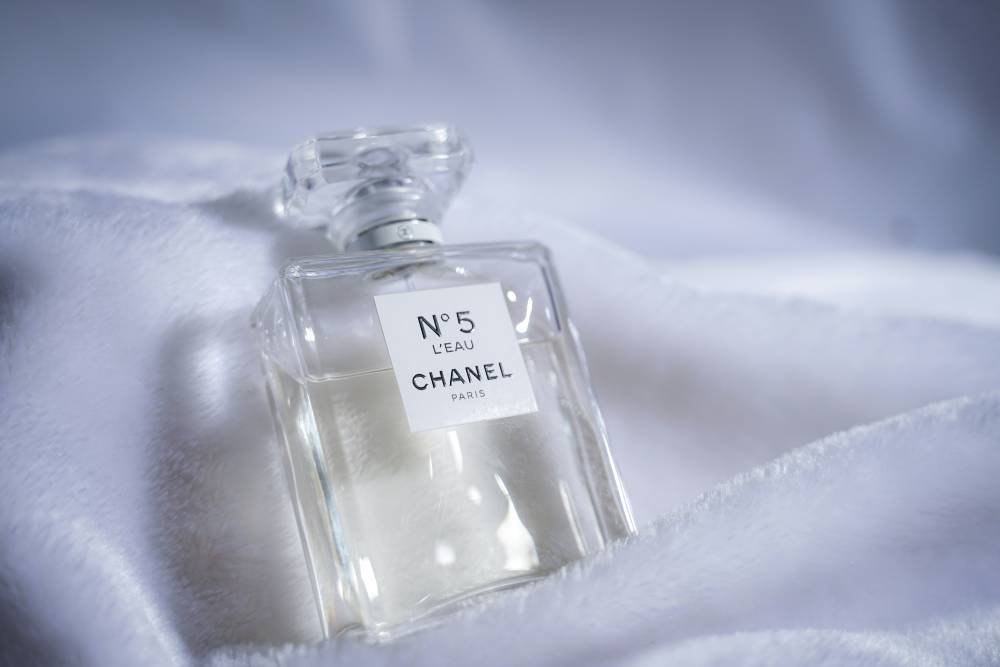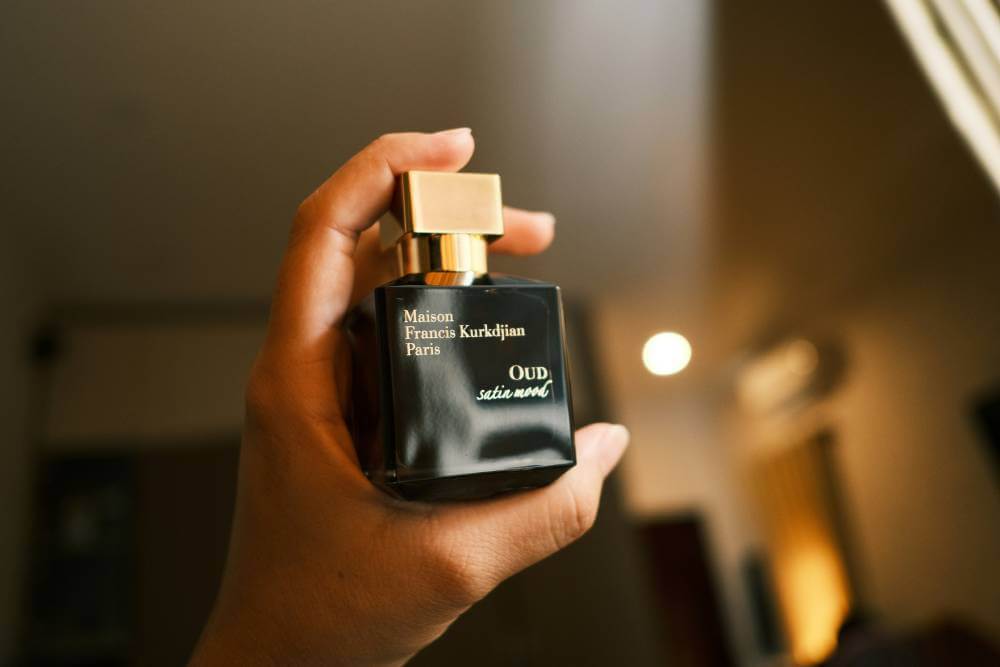Aldehydes and perfumery are intricately linked, and it’s rare to find a fragrance in the world that doesn’t incorporate them in some form.
These organic compounds are found in many natural materials, including rose, vanilla, orange rind, pine essence, citronella, and cinnamon essential oils, contributing to their delightful aromas. In my experience, the presence of aldehydes is often what elevates a fragrance, adding depth and complexity to the scent profile.
Interestingly, aldehydes can also be synthesized in a laboratory, allowing perfumers to create consistent and unique scents that may not be readily available in nature.
Chemically, these fragrant compounds contain what is known as a formyl group, which is part of a specific molecular structure represented as (R-CHO) in organic chemistry. Understanding this structure is essential for perfumers, as it helps them manipulate and blend different aldehydes to achieve the desired olfactory effects in their creations.
What Are Aldehydes?

According to Wikipedia, “An aldehyde is an organic compound containing a terminal carbonyl group. This functional group consists of a carbon atom bonded to a hydrogen atom with a single covalent bond and an oxygen atom with a double bond. Thus, the chemical formula for an aldehyde functional group is -CH=O and the general formula for an aldehyde is R-CH=O. The aldehyde group is occasionally called the formyl or methanoyl group. Other classes of organic compounds containing carbonyl groups include ketones and carboxylic acids.”
In my understanding, aldehydes play a crucial role in both organic chemistry and the fragrance industry, serving as key building blocks for various compounds.
Aldehydes are the result of partial oxidation, and their name is often derived from the name of the acid they form. They are widely used in the manufacture of synthetic resins and for creating dyestuffs, flavorings, perfumes, and other chemicals. From my perspective, the versatility of aldehydes makes them invaluable in many industries, particularly in perfumery, where they contribute to the complexity of scents.
Some aldehydes are also utilized as preservatives and disinfectants, showcasing their functional diversity.
These compounds incorporate a carbonyl functional group (C=O), and the carbon atom that is part of this group has two remaining bonds that can either be occupied by hydrogen atoms or an alkyl (hydrocarbon group). This structural flexibility is what allows aldehydes to exhibit a range of aromatic properties.
If at least one of these groups is hydrogen, the compound is classified as an aldehyde. Conversely, if neither is hydrogen, the compound is known as a ketone, which also has a pleasant odor and is frequently found in musky perfumes and colognes, as well as in food flavorings. Understanding the distinction between aldehydes and ketones is essential for perfumers, as it helps them select the right components to achieve their desired fragrance profiles.
The Olfactory Prowess of Aldehydes
Our master perfumers are well aware of the fragrant majesty rendered by aldehydes, and they utilize them frequently in varying amounts. In my experience, the skillful use of aldehydes can elevate a fragrance, adding complexity and depth that captivates the senses.
The Diverse Aromatic Spectrum
Aldehydes are unique in that they exhibit a wide range of smells, which can be categorized based on their molecular weight. Those with a lower molecular weight can produce unpleasant odors, often resembling the malodors of rotting fruit. I find it fascinating how the molecular structure of these compounds can drastically influence their scent profile, highlighting the importance of careful selection in perfumery.
Conversely, aldehydes with a higher molecular weight tend to have very pleasant aromas. These compounds are often the stars of many beloved fragrances, contributing to their signature scents. For instance, the use of higher molecular weight aldehydes can impart a luxurious, creamy quality to perfumes, making them feel more sophisticated and inviting.
Aliphatic Aldehydes: The Perfumer’s Choice
The aldehydes used by perfumers are primarily known as aliphatic, or “fatty,” aldehydes. Their scents can range from soapy to metallic, waxy to starchy, and even green to citrus. For example, the elusive lemony scent found in soaps and detergents is often attributed to specific aldehydes, showcasing their versatility in creating fresh and clean fragrances.
Aliphatic aldehydes are particularly valued in the fragrance industry for their ability to blend harmoniously with other ingredients. In my opinion, this blending capability is what makes them so essential in crafting well-rounded fragrances that appeal to a broad audience.
The Role of Aldehydes in Modern Perfumery
In contemporary perfumery, aldehydes have become synonymous with innovation and creativity. They were famously popularized in the early 20th century by iconic fragrances such as Chanel No. 5, which utilized aldehydes to create a groundbreaking scent profile that was unlike anything available at the time. This historical context underscores the transformative power of aldehydes in the fragrance world.
Today, perfumers continue to experiment with aldehydes, pushing the boundaries of scent creation. I believe that the ongoing exploration of these compounds allows for the development of unique and memorable fragrances that resonate with consumers on an emotional level.
The History and Myth Behind Aldehydes
It is often believed that the fragrance Chanel No. 5, created in 1921, was the very first aldehyde scent ever made. However, this is as much a myth as the notion that Christopher Columbus was the first European to set foot in the New World back in 1492. (The Vikings, Amerigo Vespucci, and others preceded him.)
The Rise of Aldehydes in Perfumery
Coco Chanel’s clever marketing played a pivotal role in popularizing the use of these precious compounds in her iconic scent, sparking a revolution in the art of perfumery. In my view, Chanel No. 5’s success was not just about the fragrance itself but also about how it was positioned in the market as a symbol of modern femininity.
Technically, these chemical composites made their formal debut in 1905 when perfumer Louis Armingeat created Rêve D’Or (Golden Dream). This marked the beginning of aldehydes’ journey into the world of fragrance, setting the stage for their widespread use in the years to come.
In 1906, the fragrance Apres L’Ondee was introduced as the first to use Anisic Aldehyde, which is widely used today in many floral accords such as lilac, hawthorn, anise, and honeysuckle. This early adoption of aldehydes demonstrated their versatility and potential to enhance floral compositions, paving the way for future innovations in perfumery.
The Story of Chanel No. 5

Chanel No. 5 may well have been a propitious mistake. As the story goes, Ernest Beaux, who was Coco Chanel’s perfumer, mistakenly added more aldehydes than she requested (almost 1%). However, she loved the resulting overdose, and it thus became part of her coveted formula. This anecdote highlights the serendipitous nature of creativity in perfumery, where unexpected outcomes can lead to iconic results.
Chanel intended to create a perfume that embodied the essence of a woman rather than simply mimicking floral scents. She once famously stated, “Women do not want to smell of a bed of roses.” This philosophy was revolutionary at the time, as it shifted the focus from traditional floral fragrances to something more complex and modern.
The Legacy of Aldehydes in Modern Fragrances
Following the success of Chanel No. 5, many other perfumers embraced aldehydes in their creations. Chanel went on to create Chanel No. 22, which also contained a blend of fatty aldehydes (C10, C11, and C12) that contributed to a citrus and floral note with soapy quality. In my opinion, this innovation not only expanded the olfactory palette available to perfumers but also set a new standard for what fragrances could achieve.
Many other classics followed suit, including Lanvin’s Arpege, Lagerfeld’s Femme, Elizabeth Taylor’s White Diamonds, and Estée Lauder’s White Linen, just to name a few. These fragrances demonstrate the lasting impact of aldehydes on the perfume industry, as they continue to be a beloved ingredient in many iconic scents.
Identifying Aromatic Aldehydes
While aromatic aldehydes possess very complicated chemical structures, their distinct smells help to easily identify them. In my experience, the olfactory characteristics of these compounds are often the most telling feature, making them a fascinating subject for both chemists and perfumers alike.
What Are Aromatic Aldehydes?
An aromatic aldehyde is defined as a compound containing the CHO radical, which is characterized by a carbon atom bonded to a hydrogen atom and a carbonyl group (C=O). One of the most well-known examples of an aromatic aldehyde is benzaldehyde, which has an odor profile reminiscent of almonds. This unique scent is not only pleasant but also serves as a key identifier for this class of compounds.
The Scent Profile of Aromatic Aldehydes
Generally speaking, aromatic aldehydes contribute a soapy, waxy, lemony, and floral touch to a perfume formula. In my opinion, this versatility makes them invaluable in the fragrance industry, as they can enhance the overall complexity and depth of a scent.
For instance, the addition of aromatic aldehydes can elevate floral compositions, adding a fresh and vibrant quality that makes the fragrance more appealing. This ability to blend seamlessly with other notes is what allows perfumers to create well-rounded and harmonious fragrances.
Most Commonly Used Aldehydes in Perfumery
Perfume titans specialize in the creation of one-of-a-kind fragrances, many of which contain a variety of aldehydes. In my experience, these organic compounds can significantly influence the overall character of a fragrance, making them essential in both classic and modern perfumery. Generally speaking, perfumes using these aldehydes can be floral, fruity, or citrus in nature.
Understanding Fatty Aldehydes
Fatty aldehydes contain between 8 and 13 carbon atoms in their molecular composition and have a very pleasant fruity or floral scent. They can be detected easily in very low concentrations, showcasing their potency and versatility. These aldehydes belong to a family of components that can exhibit metallic, starchy, citrusy, or waxy characteristics, making them invaluable in crafting complex fragrance profiles.
Common Aldehydes in Modern Perfume Formulations
Here are some of the most prevalent aldehydes used in modern perfume formulations:
C7 Aldehyde: This compound renders a sharp, herbal, and green aroma reminiscent of the fresh outdoors. It evokes images of breezes wafting through gardens filled with the scent of flowers such as jasmine, rose, iris, and lily-of-the-valley.
C8 Aldehyde: Known as octanal, this aldehyde has the specific chemical formula CH₃(CH₂)₆CHO. This colorless, fragrant liquid has a fruit-like odor and occurs naturally in citrus oils. It is strongly suggestive of oranges and waxy citrus orange peel, making it a powerful fatty compound often found in lemon fragrances.
C9 Nonanal: This complex compound, also known as nonanal, is a clear brown liquid characterized by a rose-orange odor. It is insoluble in water and found in at least 20 essential oils. Nonanal has a warm, mostly floral scent (rose and jasmine) with a waxy-cucumber nuance, rendering fragrances very fresh and clean. It is used extensively in perfume formulas, often in combination with other aldehydes.
C10 Decanal: C-10 Decanal has the specific formula C₁₀H₂₀O and is an important component in citrus fragrances. This complex compound evokes the scent of orange rind and lemons, particularly Citral, which is a naturally occurring mixture of two aldehydes with the same formula but different structures.
C11 Undecanal: This 11-carbon aldehyde is complex, clean, and naturally present in coriander leaf oil. Its chemical formula is C₁₁H₂₂CHO, and it conveys a bitter and fresh effect in cologne formulations. The odor profile is pleasant, comprising slightly citrus (orange), fatty, and waxy-floral (rose) elements.
C12 Lauric — Dodecanal: This compound retains the chemical formula CH₃(CH₂)₁₀CHO. It is a colorless liquid that appears in many fragrances and occurs naturally in citrus oils. Known for its intensity, it can take on different qualities depending on its concentration. In high concentrations, it has a sweaty and metallic odor, but when diluted, it reveals floral (lilacs or violets) and herbaceous qualities.
C13 Tridecanal: Containing 13 carbon atoms with the molecular formula C₁₃H₂₆O, the odor profile of this aldehyde can be described as fresh, clean, soapy, citrus, and waxy grapefruit peel. Its purpose is to provide watery, citrus, and floral notes to many diverse types of fragrances.
C14 Undecane: Commonly known as the peach aldehyde, this compound technically falls into the category of a lactone. It has a sweet, fruity peach odor profile and is widely used in perfume compositions, albeit in small amounts, as it is a very powerful compound.
So-Called Aldehyde C16: The molecular formula for this sweet, fruity strawberry scent reminiscent of candy is C₁₂H₁₄O₃. This compound has a secondary floral-honey nuance, making it ideal for floral compositions like jasmine and rose, as well as those with strong fruity tones. According to Wikipedia, “Ethyl methylphenylglycidate, commonly known as ‘so-called aldehyde C-16′ and also as ‘strawberry aldehyde,’ is an organic compound used in the flavor industry in artificial fruit flavors, particularly strawberry.”
C18 Gamma-Nonalactone: This creamy, buttery coconut compound has the chemical formula CH₃CH₂CHO and is also known as Gamma-Nonalactone. It is one of the most frequently used lactones in perfumes and tropical flavors. Its applications range from luxury perfumes to inexpensive odor masking, making it a versatile ingredient in the fragrance industry.
Schiff’s Bases: Schiff’s bases are created by combining fragrance aldehydes with methyl anthranilate, resulting in unique reactions that create distinctive aromas. Methyl anthranilate, both as a component of various natural essential oils and as a synthesized aroma-chemical, is extensively used in modern perfumery. Quoting a recent article in Perfumers World, “In a perfumery context, the most common Schiff’s Base is known as aurantiol, produced by combining methyl anthranilate. Aurantiol (Methyl Anthranilate Schiff’s Base) is characterized by sweet, heavy floral notes reminiscent of orange blossom and honeysuckle.”




